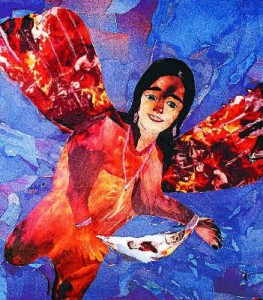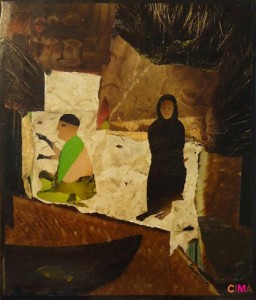 |
| Alang, Gujarath, located in the Gulf of Khambhat, is a ships breaking place. Workers, all men, carry a wire to draw by winch a huge scrap’s piece on the beach. Ships aground, vessels stranded at low tide on the shore. Alang is considered as the biggest scrapyard in the world. Ships are recycled for its metals. (Photo: Didier Ruef) |
 |
| A satellite image of Alang shows a small stretch of the beach with dozens of large ships waiting to be dismantled. (Photo: Google Maps) |

















